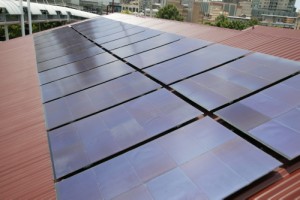First Solar Inc., the biggest U.S. solar-panel manufacturer, is closing in on agreements to supply its technology to mining projects in Australia to help resource companies achieve reduction of fuel-related costs.

According to the article on Bloomberg, the company expects to develop up to 200 megawatts of capacity for the mining industry over the next three years.
“In an environment where profitability isn’t what it used to be, with the mining industry focused on cost control, the electricity that powers the mines is becoming a bigger line item, and the ability to put a dent in that and hedge against fuel price volatility is something that solars offers,” Jack Curtis, First Solar’s Sydney-based vice president of business development for the Asia-Pacific, said in a phone interview on March 28.
“We expect fairly shortly to announce some pretty exciting projects in that space.”
According to Mr Curtis, the company was looking to expand its global footprint and strike deals in other regions including Saudi Arabia, India and South America, at a time when the world’s largest mining companies, including BHP Billiton Ltd. and Rio Tinto Group, are reining in spending as a decade-long boom in metal prices wanes.
Mr Curtis also said First Solar targeted mining sites in Western Australia, the Northern Territory and South Australia, but refused to name any companies.
Nathan Lim, First Solar shareholder and the manager of the Australian Ethical International Equities Trust (AUSEIET), said the solar industry proved it can provide reliable supply and allow Australian mines facing high diesel fuel costs grow more comfortable using solar technology to generate some of their power.
“The high cost of energy at a facility in the middle of nowhere has always made it interesting to anyone offering an alternative solution,” Mr Lim said.
“The difference between today and five to 10 years ago is the reliability, and that the cost of solar has come down. It’s becoming a no-brainer for people in remote locations.”
First Solar modules are also being used at AGL Energy Limited’s planned 155-megawatt solar projects in NSW, which was awarded A$167 million in funds from the government’s Australian Renewable Energy Agency.
According to Mr Curtis, a large chunk of this amount (about A$142 million) will go to Australian companies, including suppliers that manufactured parts for its ailing car industry.
“This country needs to be looking for replacement industries that can be sustainable,” he said.
“With the natural resources sector paring down, the auto industry grinding to a halt, and manufacturing having a tough time, the country is putting its eggs into the baskets of construction and real estate. The solar industry can actually be one of those sustainable industries.”




















